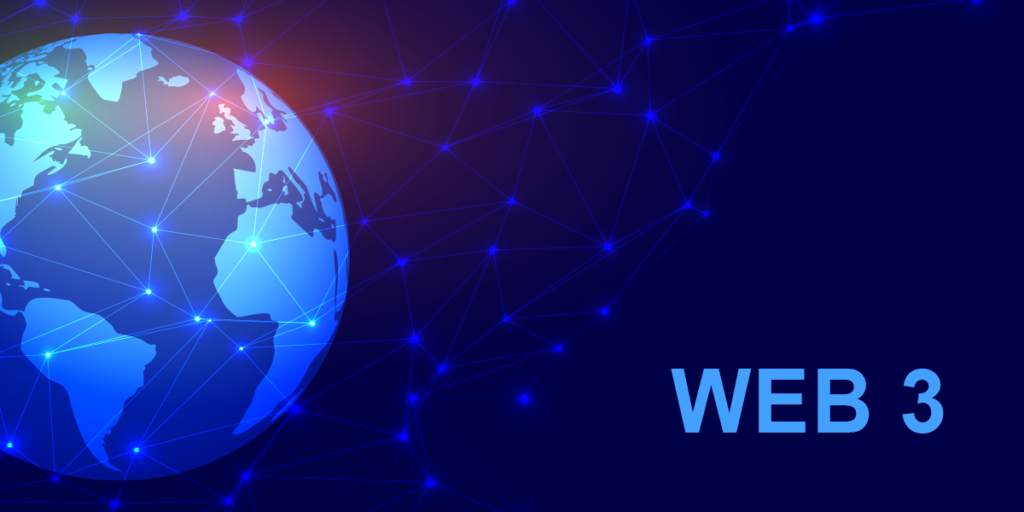We all know and love web1 – aka the internet. In the second wave was web2 – the user-generated web, brought about by social media. Everywhere we look now, people are referring to web3 (or sometimes web 3.0) as the next big evolutionary leap forward for the internet. But what exactly is it?
Web3’s main principle is decentralization – rather than being controlled by governments and corporations as it is with today’s internet – and, to some degree, connected to the “metaverse.”
What is the decentralized web?
Nowadays, almost all of the sites and sites we use to spend time online are controlled by corporations or, to a certain extent, regulated by governments. It is because this was the simplest way to build network infrastructure – installing servers and setting up software on them that people want to use online, then charging us to use it or letting us use it for free, depending on the terms.
We have other options today, and in particular, we have blockchain technology. Blockchain is a relatively new method of storing data online that relies on two key concepts: encryption and distributed computing.
Using encryption, data stored on a blockchain can only be accessed by those who have permission to access it – even if the data is stored on a computer owned by someone else, like a government or corporation.
Distributed computing means that the file is shared across multiple server. When one copy of a file does not match all others, then that file’s data is invalid. As a result, no one other than the data owner or the entire distributed network can access or modify the data.
All of these concepts mean that data can be stored so that it is always under the control of the person who owns it, regardless of whether it is being stored on a server owned by a corporation or under the control of a local government. The owner or government cannot access or modify the data without the keys to the encryption that proves they own it. Even if they remove their server, the data will still be accessible on hundreds of other computers.
Other important terms used to describe web3’s technical infrastructure are open, meaning that it is built on open-source software, trustless, and permissionless.
Having a trustless system means two parties can interact and transact without a trusted third party being involved.The issue wasn’t necessarily the same on web2 or below as you would need to ensure the medium through which you transacted or interacted was not being manipulated.
The best example of a web3 trustless transaction is sending Bitcoin directly to another person, rather than via an exchange or wallet stored on a centralized server.The entire process of completing the transaction is controlled by the blockchain algorithm and encryption, and there is virtually no chance that someone can interfere.
As well, “permissionless” means neither party in a transaction or interaction has to ask for permission from a third party (such as a service provider or government).
I know you must be thinking that all this talk about avoiding government interference sounds a little bit anarchistic or libertarian, There are still many questions about the implications of this lack of oversight and control for safety and legality.We have already seen governments take steps to enact legislation to keep some level of control over Internet communications and web3.
Web3 concepts – Decentralised Autonomous Organisation
A DAO is a web3 concept that refers to a group, company or collective bound by rules and regulations contained in a blockchain.In a DAO-based shop, for instance, the price of all of the items, as well as who would receive payments, would be held on a blockchain. In the DAO, shareholders would be able to vote on changes to prices or who gets the money.
However, an individual cannot change the rules without permission. The owners of the physical infrastructure, such as the server owners or the owners of the facilities where the profits were stored, could not interfere in any way, such as running away with the profits!
In theory, DAOs eliminate all the middlemen who are necessary for an organization to run, such as bankers, attorneys, accountants, and landlords.
Artificial intelligence (AI) and web 3.0
The majority of people believe that AI will play a major role in web3. Many web3 applications will require machine-to-machine communication and decision-making, so this is the case.
How does the metaverse fit with web3?
The last important concept of web3 that we have to cover is the metaverse. Specifically, the term “metaverse” describes the next iteration of the internet’s front-end – the user interface through which we interact with the online world, communicate with others, and manipulate data.
As you may have missed the hype, the idea of the metaverse is that it will be a much more immersive, social, and persistent version of the internet that we all know and love.Through technologies like virtual reality (VR) and augmented reality (AR), it will enable us to interact with the digital domain in a more natural and immersive way –As an example, we can use virtual hands to pick up and manipulate objects, or our voices to speak to machines or others. Metaverses serve as the interface through which humans interact with web3 tools and applications.
There is no need to involve the metaverse in creating web3 applications – Bitcoin is one example –Metaverse technology and experiences will likely play a key role in the way many of these applications interact with our lives.
Some examples of web 3.0 applications
Bitcoin – It has been around for more than a decade, and the protocol itself is decentralized, although not all of its ecosystem is.
Diaspora – Decentralized, non-profit social network
Steemit – A blockchain-based social media and blogging platform
Augur – Market for decentralised exchange trading
OpenSea – A platform for buying and selling NFTs, built on the Ethereum blockchain
Uniswap – Decentralised cryptocurrency exchange



